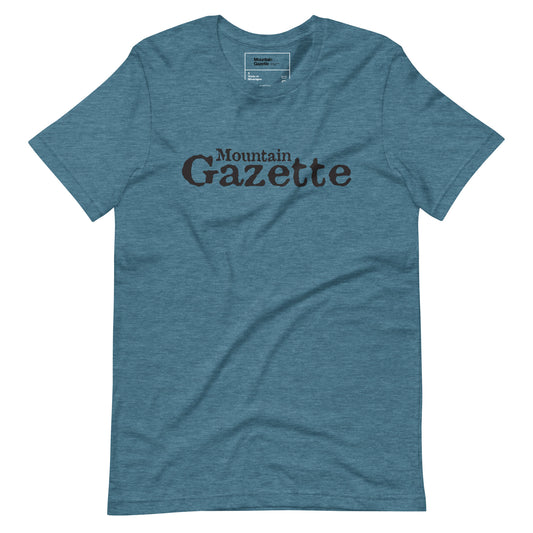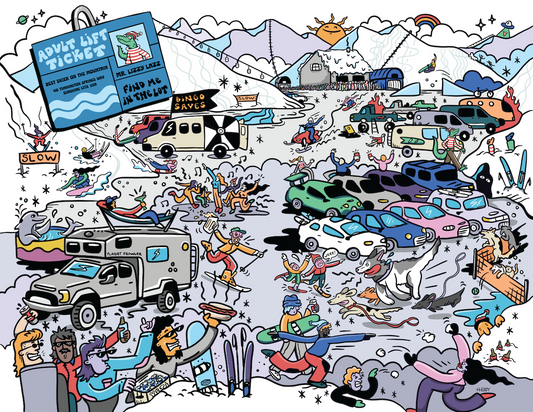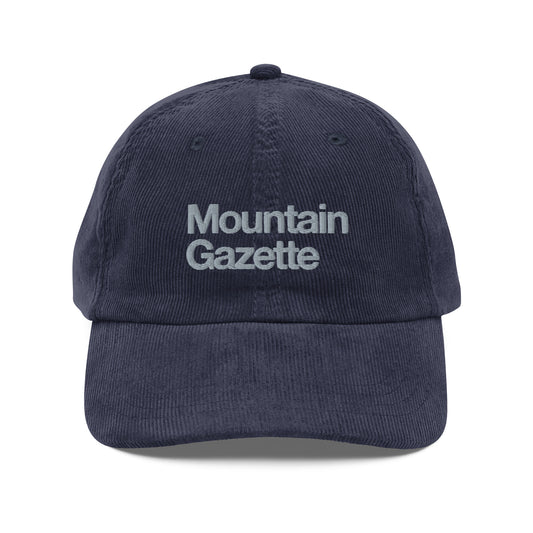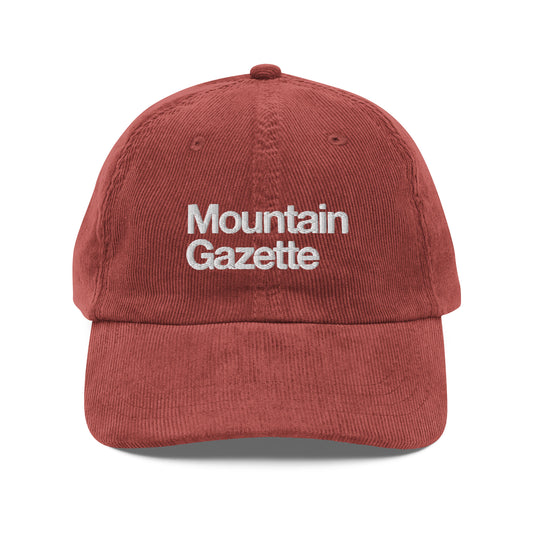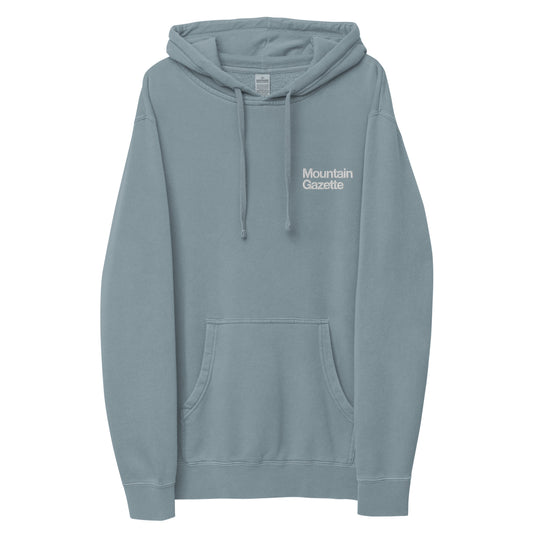
By Conor Sedmak
The Arrival
“I thought we’d get about 30 centimeters. This feels like 3 feet!” says our guide, Wes Wylie.
Wes had been ski guiding in Alaska for a decade when he first linked up with Mike Overcast and Tommy Moe, who founded Chugach Powder Guides and are two of the three co-owners of Tordrillo Mountain Lodge (TML). After getting an invite to join Overcast and Moe on a trip to the Tordrillo Mountains in 1997, Wes has been coming up to ski and guide here ever since. And even though he’s spent nearly 30 winters skiing and guiding here, the place is still capable of surprising him.
We were working hard, plowing through waist-deep snow and getting ready to step into our skis. I wasn’t entirely aware of where the day would take us. The snowpack here was something that the guides had been monitoring closely, and we’d spent our first day in the field cruising low-angle terrain to play things safe. Yesterday had been a down day for our group, with the weather keeping us and the helicopters socked in back at the lodge. Today’s blue skies meant we were back in business.
Tordrillo Mountain Lodge holds an esteemed reputation in the ski world. At the height of my impressionable years, Warren Miller’s Playground was on its national tour, and the annual multi-night Warren Miller run at Denver’s Paramount Theatre was on. Tordrillo Mountain Lodge had a segment in the film, with ten minutes of footage of Chris Davenport and Cody Townsend being helicoptered into breathtaking terrain and ripping awe-inspiring lines. My life as a ski-bum-hopeful changed forever, as would my idea of what it meant to be a skier.

 Endless mountains, magnificent glacial valleys, and a scale of topography that a 14-year-old kid from the Lower 48 could only dream of. From my seat in the theatre, the hook was set. Fast forward a few years (18, to be exact), and when the opportunity came for me to experience heli-skiing in Alaska for myself, I was ready.
Endless mountains, magnificent glacial valleys, and a scale of topography that a 14-year-old kid from the Lower 48 could only dream of. From my seat in the theatre, the hook was set. Fast forward a few years (18, to be exact), and when the opportunity came for me to experience heli-skiing in Alaska for myself, I was ready.
Not typically one to ski with a GoPro, I bought one for this trip. This was an experience that I’d want to remember—and relive—for the rest of my life.
Mountain Gazette’s art director, John Coleman and I arrived in Anchorage on a clear Friday afternoon. We’d spend a night in town before being shuttled to Lake Hood Seaplane base, where we’d lift off for our final flight to Tordrillo Mountain Lodge. A scenic 40-minute flight over the frozen Alaskan tundra transported us to Tordrillo Mountain Lodge, nestled on the shore of Judd Lake, roughly 60 miles from Anchorage. Our group for the week would consist of John and myself, a trio of friends from Utah, and a pair from Colorado.
“You boys ever ripped fresh corduroy in an airplane before?” joked Zach, one of the Utahns, over the ski-plane headset as we made our approach. Zach had been to the lodge before and his comment came from experience. Judd Lake makes for a seaplane pilot’s ideal landing zone: It’s fully frozen over in the winter and TML even maintains the runway with an on-property snowcat. The skis on the bottom of our Beaver touched down, marking our first official run of the week, a straightline landing on the lake.
It was immediately obvious that the whole operation at TML was a well-oiled machine. Sooner than we could even take in our surroundings, our gear and luggage had already sped half-way across the frozen Judd Lake on the back of a snowmobile, on its way to our lodge. While I’m generally more accustomed to schlepping my own gear, I got the sense that I might not be doing that too much this week.
We would spend about an hour getting up to speed on everything we’d need to know and acquainting ourselves with the team that would become our family over the course of our week at the lodge. The lodge manager, Nicole; chefs, Jay and Victor; massage therapist, Vicky; and guides, Sam and Brian all welcomed us in and made us feel right at home. We filled out a bit of paperwork before going through an avalanche beacon drill, a probe search exercise, a heli safety briefing, and a quick weigh-in. By mid-day, John and I were certified heli-skiers.



Wes led our group in a discussion about the snowpack in the Tordrillo mountains, the conditions, avalanche rating, and recent avalanche activity in the area. Given recent snow, wind loading, and a significant avalanche event nearby in the week before our arrival, Wes let us know that we would be skiing what TML considers its green runs: low-angle terrain with little to no overhead risk, few—if any—terrain traps, and ample lines-of-sight. To me, the plan sounded great. After all, my day had already featured a skiplane flight in Alaska, ripping fresh lake corduroy, arriving at Tordrillo Mountain Lodge, and getting strapped in with my first helicopter. How much better could things get?
Low-angles and Big Smiles
If you didn’t know much about Alaska (or heliskiing), it might not immediately occur to you that good, flyable weather is not a given in winter. When a storm cycle breaks, giving way to high pressure and clear skies, it’s highly advisable to make the most of it. Having been gifted a perfect bluebird afternoon upon our arrival to the Tordrillo mountains, our group would be gearing up, loading into one of TML’s two AS 350-B3 A-Star helicopters and heading out into the field on day one.
If my adrenaline wasn’t pumping by the time we’d kitted up and stepped up into the helicopter for the first time, it was full-on once I heard the rotors whir up, strapped in in the back seat of the A-Star. The machine roared to life, its energy building more with each passing second. As the rpm of its main rotor increased, snow kicked up from the ground around us. We loaded up, Wes calmly gestured to our pilot, and the A-Star lifted off.



The noise of the machine drowned out all but our fist bumps as we made our way west over Judd Lake for our inaugural approach into the Tordrillos. The ride was surprisingly smooth as we hauled our way past 1,000-meter peaks, each one with no shortage of big-line potential.
Our first exit from the helicopter deposited us into close to waist-deep snow. I was loving the thrill of it all and unable to hear much of anything as the rotors ripped through the mountain air at hundreds of rpms above our heads. The rush of scrambling out of the roaring machine, post-holing into the deep snow of the alpine ridge, feeling the blast of rotor wash and then watching the helicopter bank away into a dramatic ascent made for one of the most exciting moments I’d ever had in my life. I was completely hooked.
I’d packed the fattest skis in my quiver for this trip, on the off chance that they might be sufficient. Having never heli-skied in Alaska before, I couldn’t help but wonder if I might want something burlier than 112mm, but also didn’t want to be that guest demanding the fattest skis and an outrageously high DIN setting. Luckily for me, the guides at TML are much smarter and far more experienced than I am, and were kind enough to set me up for the week with a gorgeous pair of Wagner Skis, 130mm underfoot, which they keep tuned and ready for every guest that comes to the lodge.
As we’d discussed, we spent our first afternoon relishing low-angle terrain in the Tordrillos, skiing a blissful 12 runs with just as many thrilling heli drops. The afternoon was bluebird, and the low-angle skiing didn’t bother me one bit. I was loving every turn in the untracked snow, and as far as I was concerned, had already had one of the most unforgettable days of my life. I appreciated the fact that our guides took that first day to get a more thorough understanding of the snowpack and to vet our riding levels and group dynamic.
Responding to my boundless joy in the beauty of every zone, Wes assured me that we had yet to even scratch the surface of the Tordrillos.

“Right Here, This Very Moment.”
Mother Nature gifted us a generous weather window during our time at Tordrillo Mountain Lodge, allowing us to fly on four of our seven days of the trip. Our group would ultimately spend close to 13 hours strapped into the seats of our A-Star, and countless more on snow, covering hundreds of miles of terrain and riding tens of thousands of meters over the span of our week.
We progressed slowly and systematically into more significant terrain. Signs of stability in the snowpack were improving in every pit and on every run, something it seems that Alaska can have a special knack for under the proper circumstances. The low-angle green runs leveled up to steeper and more dynamic orange runs, providing contours, mini-golf features, and playful mini-spines.
We skied some of the softest, lightest snow that one could imagine. If you’ve ever waterskied outside a wake on perfect, glassy water, it felt like that. Only, skiing down-slope for 2,000 meters of vertical relief in Alaska.

Tuesday would be our second day out in the field, and after Monday’s significant refresh, would provide us with a full day of deep, weightless turns. As we worked to clear the space to kick into our skis amid the 3 feet of new snow at the top of our ridge, we were all a bit surprised with just how much snow the previous day had brought.
I posed a question to Tom and Zach, the two others in our group, asking if they could think of their favorite place that they’d ever heli-boarded. Zach, the Director of Global Athletes and Partnerships for Burton, and Tom, an Orthopaedic Surgeon from Vail and the Team Physician for the US Snowboard Team, both are well-traveled and experienced riders. “Right here, this very moment,” Tom said.
The Tordrillo snow laid peacefully and invitingly below us, as if asking for one of us to come carve through it. In direct sunlight, the snow glistened and sparkled with a magic that would be hard to find anywhere else on earth. Airborne crystals fluttered in and out of existence with such ephemerality that one would wonder if they had just stood up too quickly after fidgeting with their boots.

Wes had dug a pit and undertook ECT and determined there was no reactivity in the snowpack. Our group was ready to drop in. This run, ‘Desperate Times’, would be a scenic cruiser and a low-angle introduction to our day. We’d be able to start progressing into larger terrain as the day would go on. Our next run would be a narrow shaded ramp, with one or two steeper shots holding incredible, light, airy snow.
A few runs later, we hit the Montrachet zone—a beautiful and playful zone not far from the venue of the 2021 Natural Selection Tour Championship. Wes sent me down a playful feature, hovering right along the sun-shade line. This would be the closest thing to a spine that I’d ridden so far. It looked low-consequence enough, starting as a cloud-like open face, culminating into a narrow bench with enough room to link together a few sweeping turns, a bit of relief on either side for any slough.
It stuck out like a crooked nose in the sun. With a safe vantage point above the line to supervise, Wes was happy sending me down the line. I linked ten long-radius turns in the shade of the open face before reaching the sun line and approaching the bench. A few sunny turns closer to my objective, I checked my speed to make sure I was lined up and skied onto the soft nose of the ridge. I laughed as the terrain sloped away and dropped off on either side, bringing my line into clearer view. The steeper shot of the bench offered the most weightless turns of the trip. With each turn, a wave of snow would cascade out from beneath my skis, before gently falling back to the ground. The snow swished effortlessly, again reminding me of waterskiing on glass.

While this was not a bonafide Alaskan spine, for me, a first-time heli-skier, it was perfect. I couldn’t possibly have been having more fun picking my way down the pitch. John dropped in after me, riding a similar line to mine, while Tom and Zach opened up a line one ribbon over.
Satisfied, we took a break for lunch in a sunny basin where the Montrachet exit met the southern edge of the Triumvirate Glacier. We snacked on fresh fruit, charcuterie, sandwiches, and warm soup, delivered, of course, by helicopter.
A Private Universe
By the end of our week, I had skied some of the most fun ski lines of my life. I also knew, just as Wes had told me our first day, that I had still only scratched the surface of the Tordrillos and the roughly 1.2 million acres of skiable terrain that Tordrillo Mountain Lodge has at its doorstep.
In our larger field of view beyond each slope beneath us, every backdrop was filled with impressive mountain ranges or a miles-long glacier with thousands of crevasses. We enjoyed each field lunch in a private universe, which only existed for our group in that very moment. It often felt as if we were in a scene from a National Geographic documentary as we refueled for our next few runs, without a sign or sound of human activity for miles. I never tired of piling out of the helicopter to watch it lift off and bank away, peeling off from us as if it had just left us there to accomplish the most important thing that we’d ever set out to do in our lives.

Of course, the skiing was not the only five-star experience we would enjoy this week. Make no mistake, life-changing heli-skiing is exactly what Tordrillo Mountain Lodge advertises (at least, during their winter season, anyway), and without a doubt, it delivered exactly that. Once back at the lodge, we would wind down the day with delicious hors d'oeuvres like sushi and native fish for aprés, before savorig world-class mains, including elk, duck confit, black cod, halibut, roasted pheasant, and king crab.
On down days, the lodge and surrounding campus was an ideal winter camp for adults, complete with a 5K cross country ski trail, fatbikes, snowshoes, a cold plunge, sauna, hot tubs, and a shooting range (yes, you can even shoot clay pigeons at TML).



More than anything, though, I was incredibly impressed by the people, the staff and our guides. The staff felt like family at the lodge, and were a treat for us to spend time with and get to know during our time at TML. The guides are true professionals. Their ability to put us on some of the most exciting skiing we could ride, while methodically managing risk and keeping us within an acceptable threshold, was something that I would marvel at over the course of the week. I felt we’d be hard-pressed to find ourselves in better hands, and I enjoyed watching Wes and the other guides go about their work.
On Thursday, John and I were invited to attend the morning guides’ meeting, giving us a front-row seat to the inner workings of how they prepare for each day in the field. Tordrillo Mountain Lodge doesn’t rely on a public avalanche forecast like the one that I use at home in Colorado, or the plethora of public avalanche forecasting services available in many other mountain regions. In part, that’s because a public avalanche forecast doesn’t exist for the Tordrillo mountains. More importantly though, it’s because they wouldn't need one anyway. The avalanche forecasting service that TML subscribes to is their own.
In the close to three decades that Overcast, Moe, Rheam, and Wes Wylie have been out scouting, skiing, and guiding in this zone, they’ve built a robust database, and have dialed in a system that exists uniquely for TML. Using data from multiple TML-installed weather monitoring stations and the National Weather Service, in addition to computer models and daily field observations (including daily run reports, snow pits, and column tests), the team has a comprehensive data set that they pull from in each day’s briefing, informing the day’s risk assessment and gameplan.



The experience and expertise is visible at every level of the operation. Most of TML’s guides aren’t on-station indefinitely. Often, they’re on-site at the lodge only by client request. Each guide must have an adept knowledge of the Tordrillo Mountains and a reputation of guiding clients safely to earn time in the rotation. That qualification extends all the way through to the ownership, who are a living treasure trove of snow science, avalanche forecasting, and ski guiding experience. During our week at TML, Moe, Overcast, and Rheam would each spend time guiding in the field, skiing with clients and submitting conditions reports over the radio.
I was blown away at the chance to experience all the things I could’ve ever hoped for in my first trip to Alaska as a heli-skier. But the biggest feeling that I was left with was one of sheer and utter gratitude. The heli-skiing was world-class. All time. But what will stick with me just as much are the unexpected experiences, the hospitality and the human experience. Those moments, often when we weren’t even clipped into our skis, were where the culture that Tordrillo Mountain Lodge has built can really shine.
To cap off our week, Wes took us on a surprise detour of epic proportion, taking us down for one final landing in the field. We were approaching a frozen river in our A-Star, nestled beside the terminus, or edge, of the massive Triumvirate Glacier. Our pilot took our A-Star down low, hovering just above the frozen river to give us a close-up look at the sheer wall of irradiant, sapphire-blue glacial ice. I’d been placed up front for this final flight home, and my jaw may as well have been touching the floor.


A full-service guide in every respect, upon our group’s request, Wes brandished his ice axe, and we chipped off a lonesome chunk of fallen ice to take with us to compliment our evening cocktails. We stowed the ice away in the helicopter basket, cozied up next to our packs and skis, and at the lodge, washed down our final day of heli-skiing in Alaska with a glacial glass of bourbon as the sun went down behind the Tordrillo mountains.
I don’t know if I’ll ever make it back to Tordrillo Mountain Lodge. But if that’s my final memory from my time here, it’s a memory that’ll last a lifetime.
The final chapter of The Tordillo Chronicles is coming next week. Read Part One by Art Director John Coleman here.






